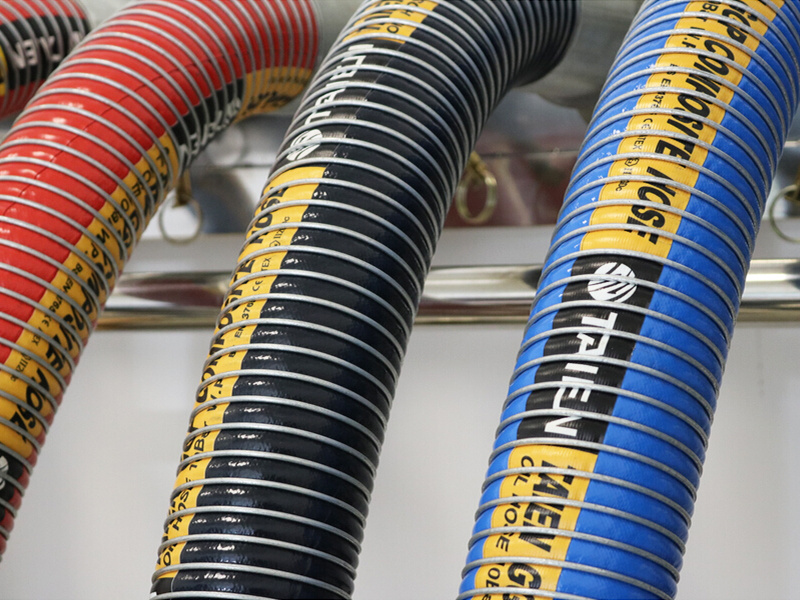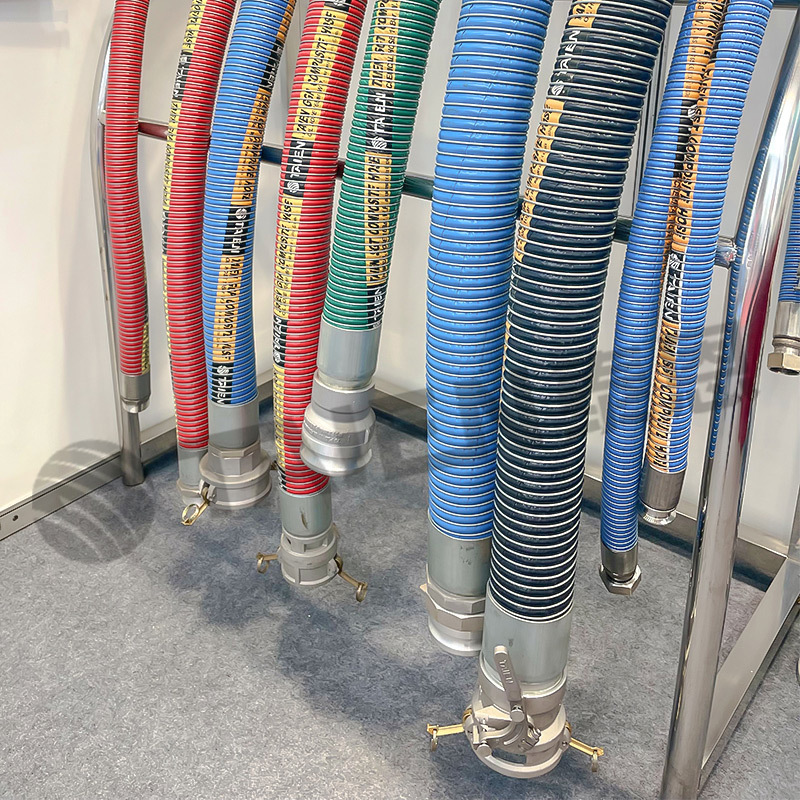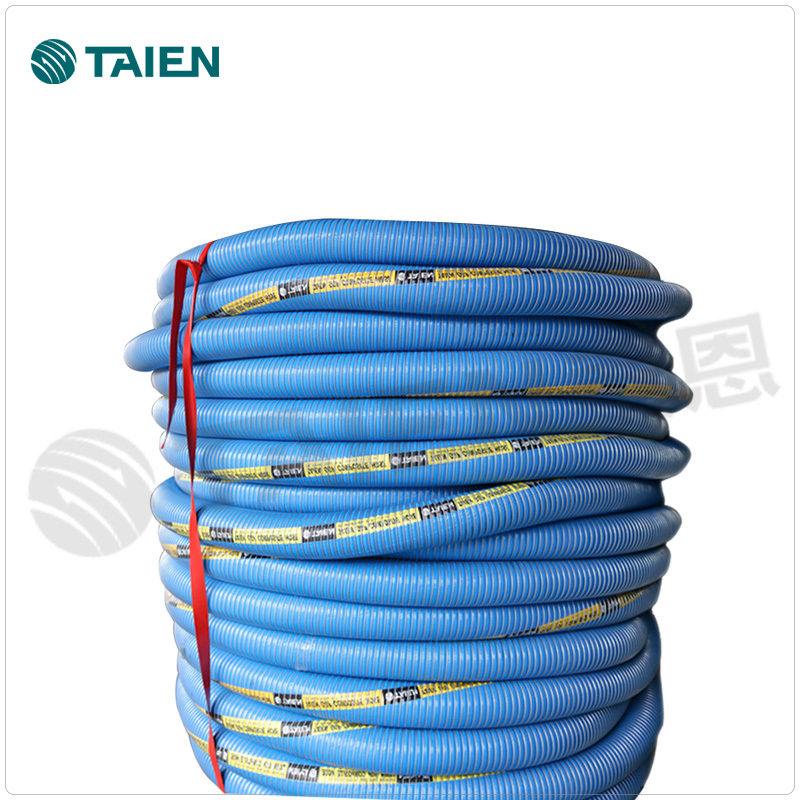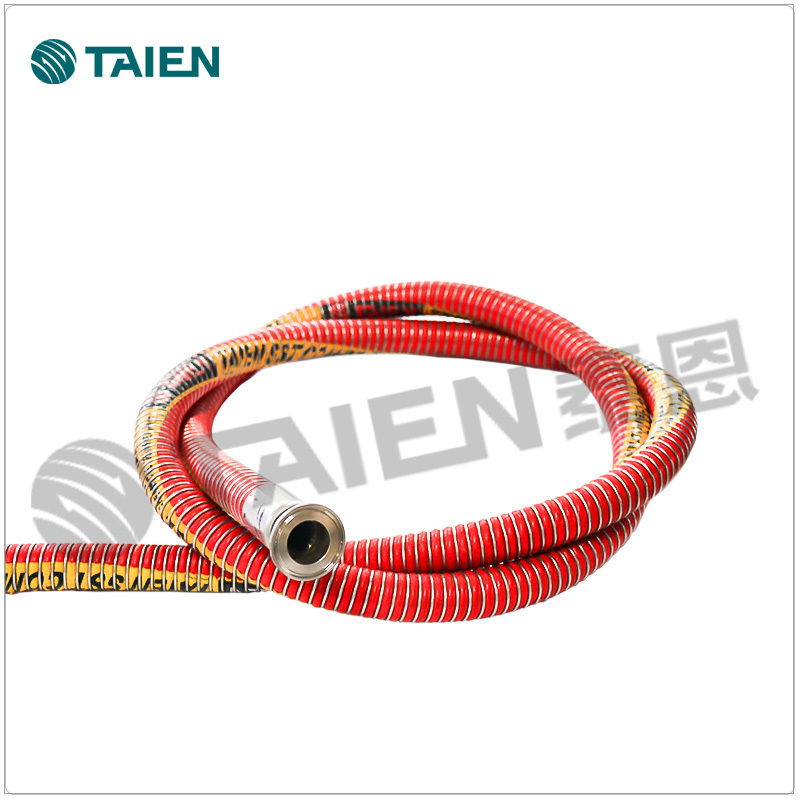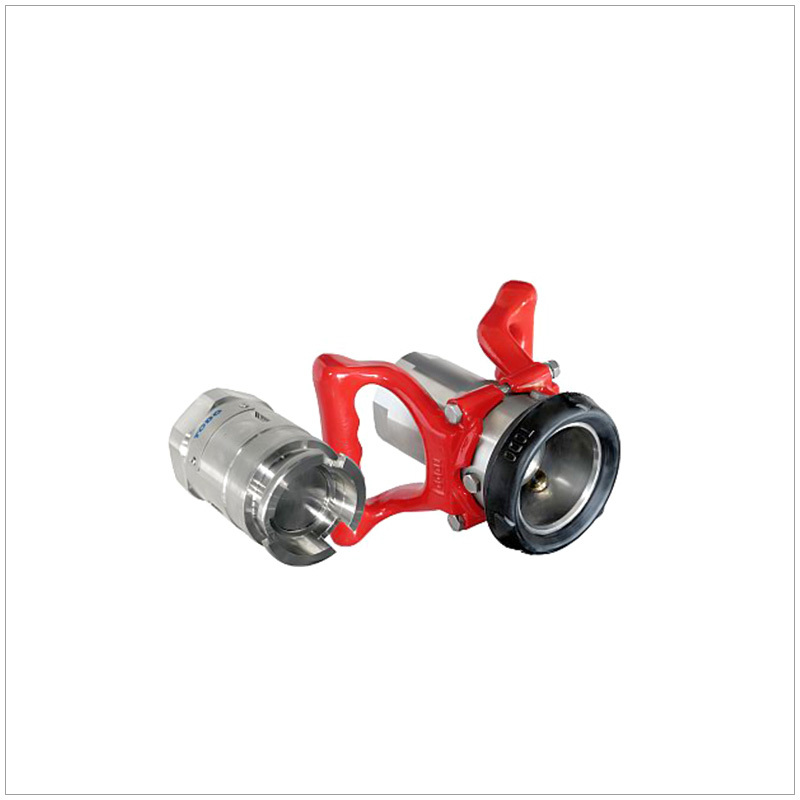The Environmental Impact of Industrial Hoses: What You Should Know
Release time:
2025-08-09
Author:
Source:
Abstract
The Environmental Impact of Industrial Hoses: What You Should Know
Industrial hoses play a vital role in various sectors, including manufacturing, construction, and agriculture. However, the environmental implications of these essential components are often overlooked. In this article, we delve deeply into the environmental impact of industrial hoses, examining their life cycle, potential hazards,
The Environmental Impact of Industrial Hoses: What You Should Know
Industrial hoses play a vital role in various sectors, including manufacturing, construction, and agriculture. However, the environmental implications of these essential components are often overlooked. In this article, we delve deeply into the environmental impact of industrial hoses, examining their life cycle, potential hazards, and ways to minimize their ecological footprint.
Understanding Industrial Hoses
Industrial hoses are flexible tubes designed to transport liquids, gases, and solids in various industrial applications. They are made from different materials, such as rubber, PVC, and thermoplastic elastomers, each with unique properties.
The Types of Industrial Hoses
1. **Rubber Hoses**: Known for their durability, rubber hoses are often used in high-pressure applications.
2. **PVC Hoses**: Lightweight and resistant to chemicals, PVC hoses are popular in agricultural and gardening applications.
3. **Thermoplastic Hoses**: These hoses offer flexibility and resistance to harsh conditions, making them suitable for multiple industries.
Applications of Industrial Hoses
Industrial hoses are used in various applications, including:
- **Manufacturing**: Transporting raw materials and finished products.
- **Construction**: Conveying concrete, water, and other materials.
- **Agriculture**: Irrigation and chemical application.
Understanding the types and applications of industrial hoses sets the stage for analyzing their environmental impact.
The Life Cycle of Industrial Hoses
To comprehend the environmental effects of industrial hoses, we must consider their entire life cycle—from production to disposal.
Production Phase
The production of industrial hoses involves extracting raw materials, manufacturing processes, and transportation. Each stage contributes to carbon emissions and resource depletion.
- **Raw Material Extraction**: The extraction of rubber, PVC, and other materials can lead to deforestation and habitat destruction.
- **Manufacturing**: Factories emit greenhouse gases and consume energy, contributing to climate change.
- **Transportation**: The logistics of transporting hoses add to their carbon footprint.
Usage Phase
Once in use, industrial hoses can impact the environment in various ways:
- **Leakage and Spillage**: Hoses that are not properly maintained can leak harmful substances, contaminating soil and water sources.
- **Energy Consumption**: The pumps and machinery used alongside hoses may contribute to energy waste.
Disposal Phase
The end-of-life stage for industrial hoses is crucial. Many hoses are not biodegradable and can persist in landfills for decades, releasing toxic substances as they break down.
- **Landfill Issues**: Non-biodegradable materials can leach harmful chemicals into the soil and groundwater.
- **Recycling Opportunities**: Some hoses can be recycled, but the infrastructure for recycling varies widely.
Environmental Challenges Posed by Industrial Hoses
Several key environmental challenges arise from the use of industrial hoses.
Pollution and Contamination
Leaks and spills from industrial hoses can lead to soil and water contamination. This pollution not only affects local ecosystems but can also pose health risks to communities.
Resource Depletion
The materials used in manufacturing industrial hoses often come from non-renewable resources. This depletion contributes to environmental degradation and climate change.
Waste Generation
The disposal of industrial hoses results in significant waste. Many hoses are discarded after a short service life, leading to increased landfill pressure.
Mitigating the Environmental Impact
To reduce the environmental footprint of industrial hoses, various strategies can be employed.
Choosing Sustainable Materials
Opting for hoses made from sustainable or recycled materials can significantly lower environmental impact. Materials such as bio-based polymers or recycled thermoplastics can offer viable alternatives.
Regular Maintenance and Inspections
Conducting routine maintenance checks can prevent leaks and prolong the life of hoses. This proactive approach not only saves money but also protects the environment.
Implementing Recycling Programs
Organizations can set up recycling programs specifically for industrial hoses. Collaborating with recycling companies ensures that hoses are disposed of responsibly.
Exploring Sustainable Alternatives
Several alternatives to traditional industrial hoses are emerging, focusing on sustainability.
Biodegradable Hoses
Biodegradable hoses are made from materials that break down naturally over time, reducing landfill waste and pollution risks.
Recycled Rubber Hoses
Using recycled rubber for hose manufacturing can lessen the demand for virgin materials, conserving natural resources.
Flexible Piping Technologies
Innovations in flexible piping can provide durable, efficient alternatives to traditional rubber and plastic hoses, minimizing environmental impact.
The Role of Regulations and Standards
Governments and industry organizations play a crucial role in regulating the use and disposal of industrial hoses.
Environmental Regulations
Stricter regulations surrounding manufacturing processes and waste management can help mitigate the environmental impact of industrial hoses.
Industry Standards
Encouraging adherence to industry standards can lead to improved practices in hose manufacturing and usage, promoting sustainability.
Case Studies: Companies Leading the Way
Several companies are setting examples in sustainable practices related to industrial hoses.
Company A: Reducing Waste Through Innovation
Company A has developed a line of biodegradable hoses that reduce waste and environmental impact. Their commitment to sustainability has positioned them as industry leaders.
Company B: Recycling Initiatives
Company B has implemented a successful recycling program, ensuring that end-of-life hoses are processed responsibly. Their efforts have garnered recognition and set a standard in the industry.
FAQs
What are industrial hoses made of?
Industrial hoses are typically made of rubber, PVC, or thermoplastic materials.
How do industrial hoses impact the environment?
They contribute to pollution, resource depletion, and waste generation during production, usage, and disposal.
Can industrial hoses be recycled?
Yes, some industrial hoses can be recycled, but the availability of recycling programs varies.
What are biodegradable industrial hoses?
Biodegradable hoses are made from materials that break down naturally, reducing environmental impact.
How can I reduce the environmental impact of industrial hoses?
Regular maintenance, choosing sustainable materials, and implementing recycling programs are effective strategies.
Conclusion
Industrial hoses are essential components in various industries, but their environmental impact cannot be overlooked. From production to disposal, these hoses contribute to pollution and resource depletion. By understanding their life cycle and implementing sustainable practices, we can significantly mitigate their environmental impact. Emphasizing the use of eco-friendly materials, regular maintenance, and recycling initiatives will not only enhance sustainability but also protect our planet for future generations. Taking action now is crucial for a healthier and more sustainable industrial sector.
Recommended Reading







